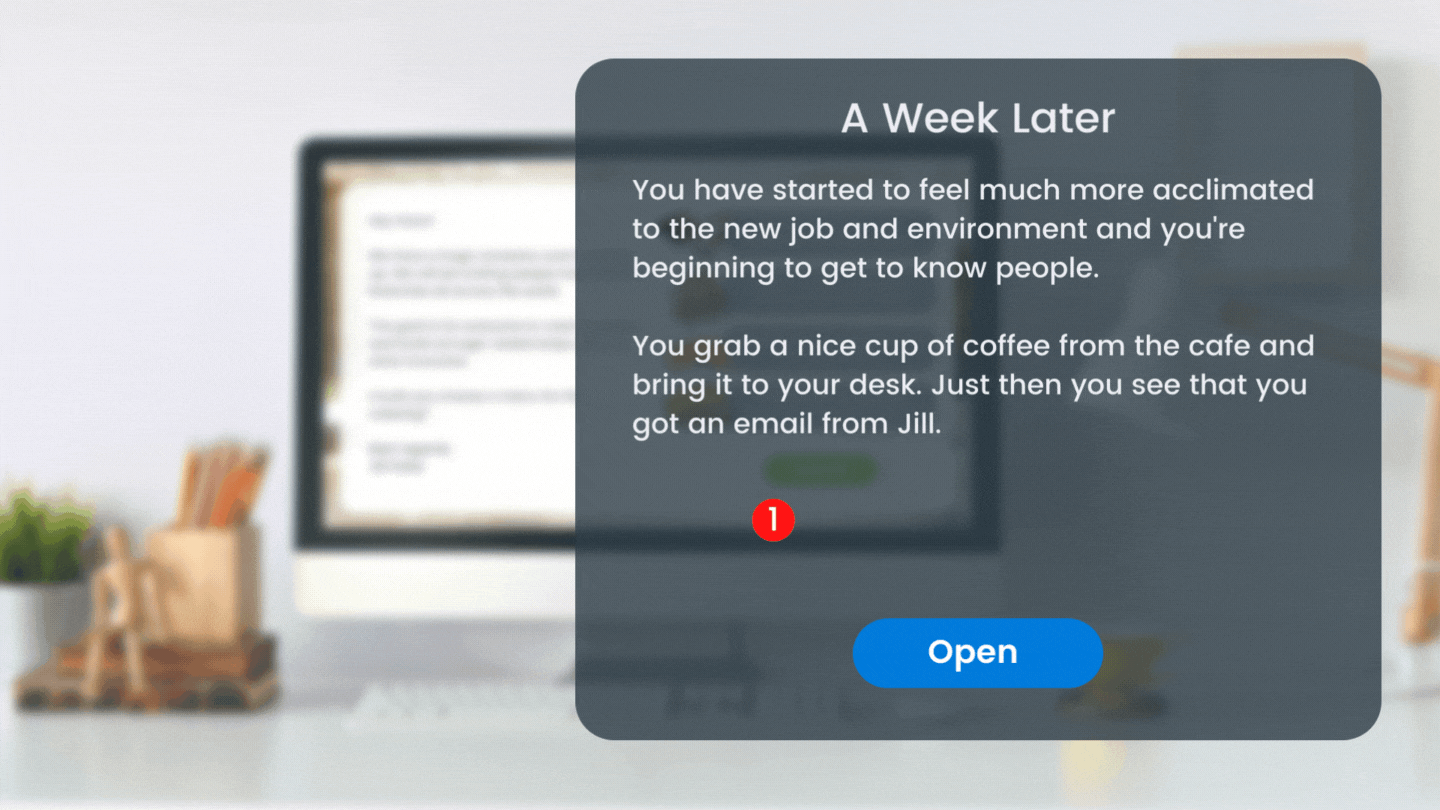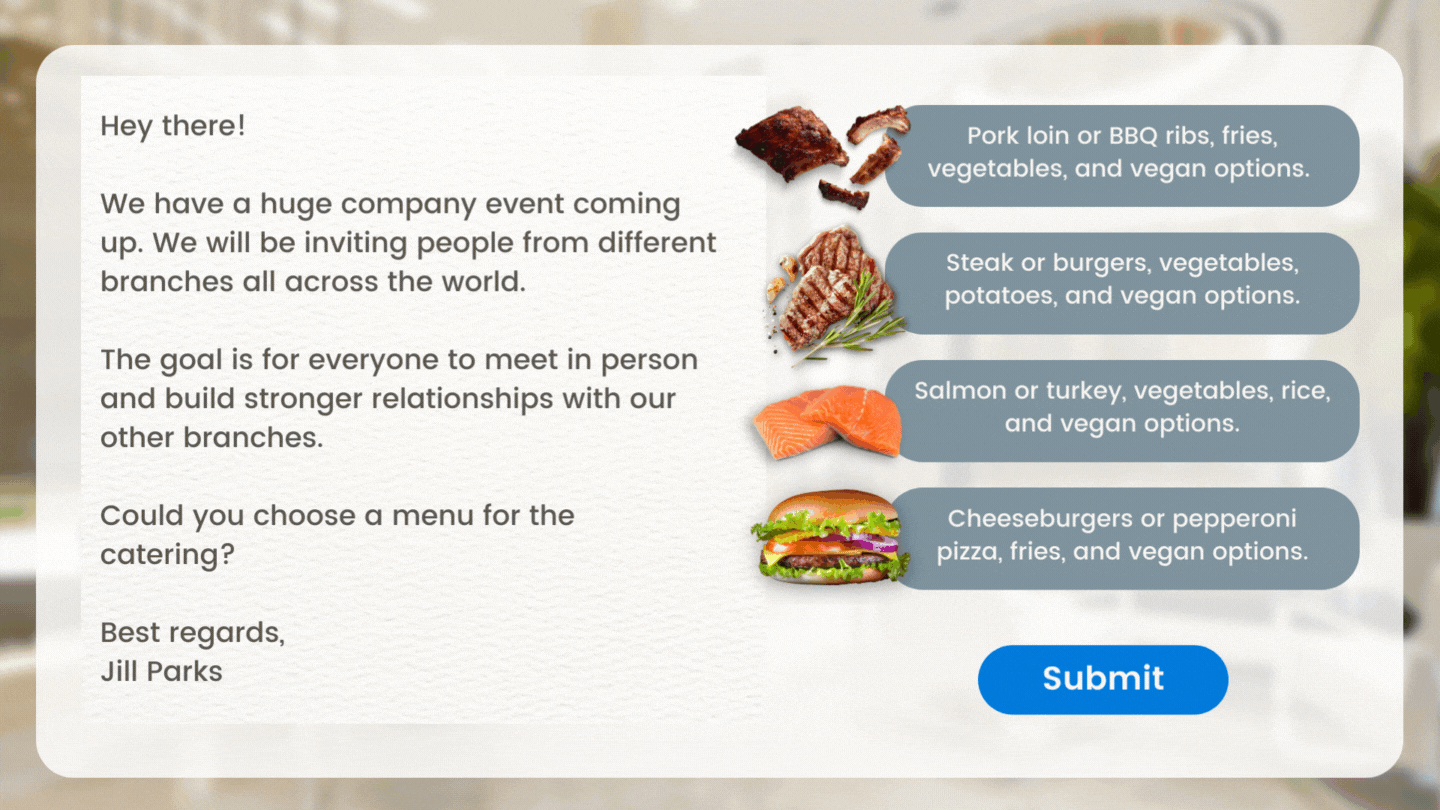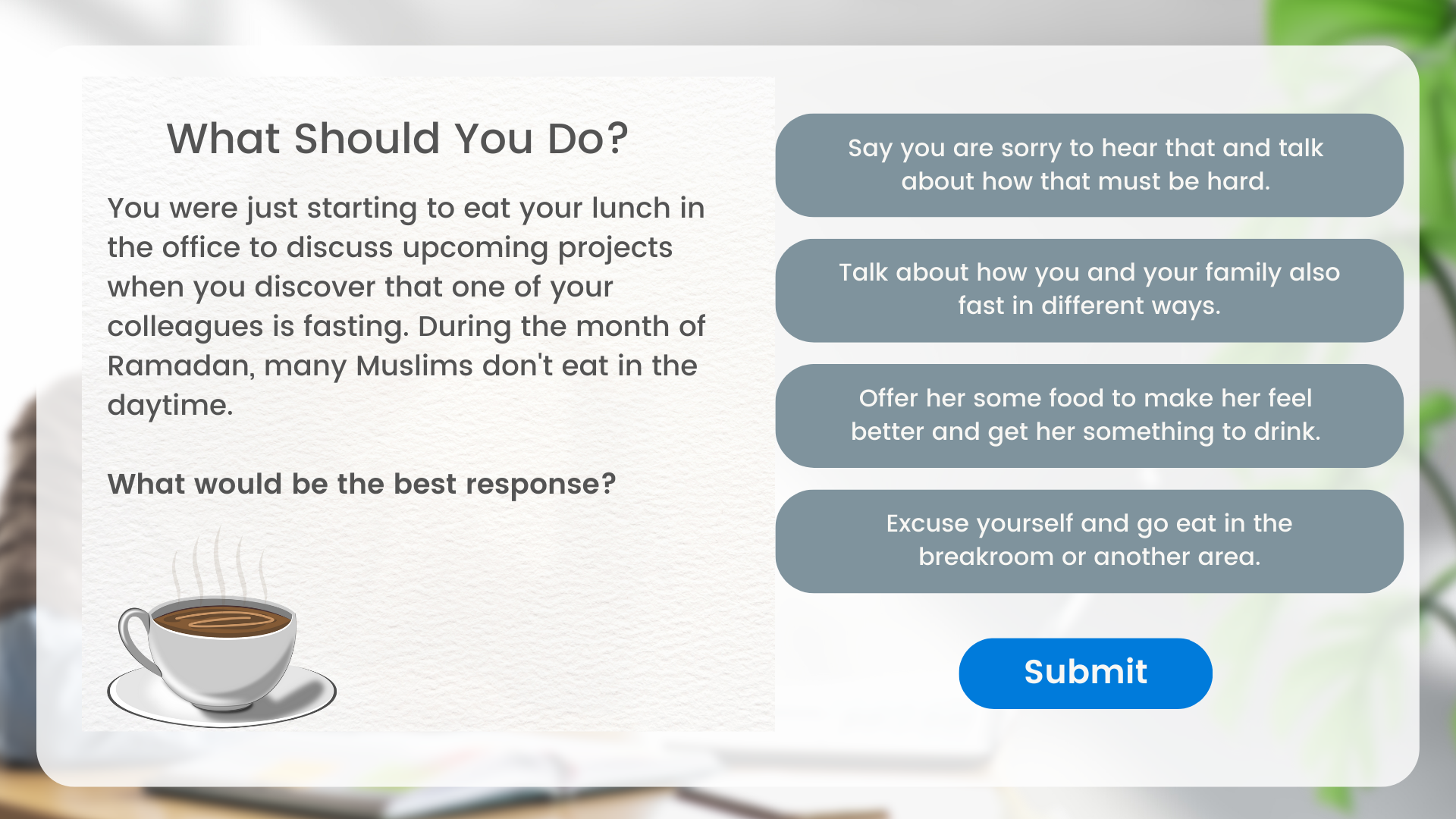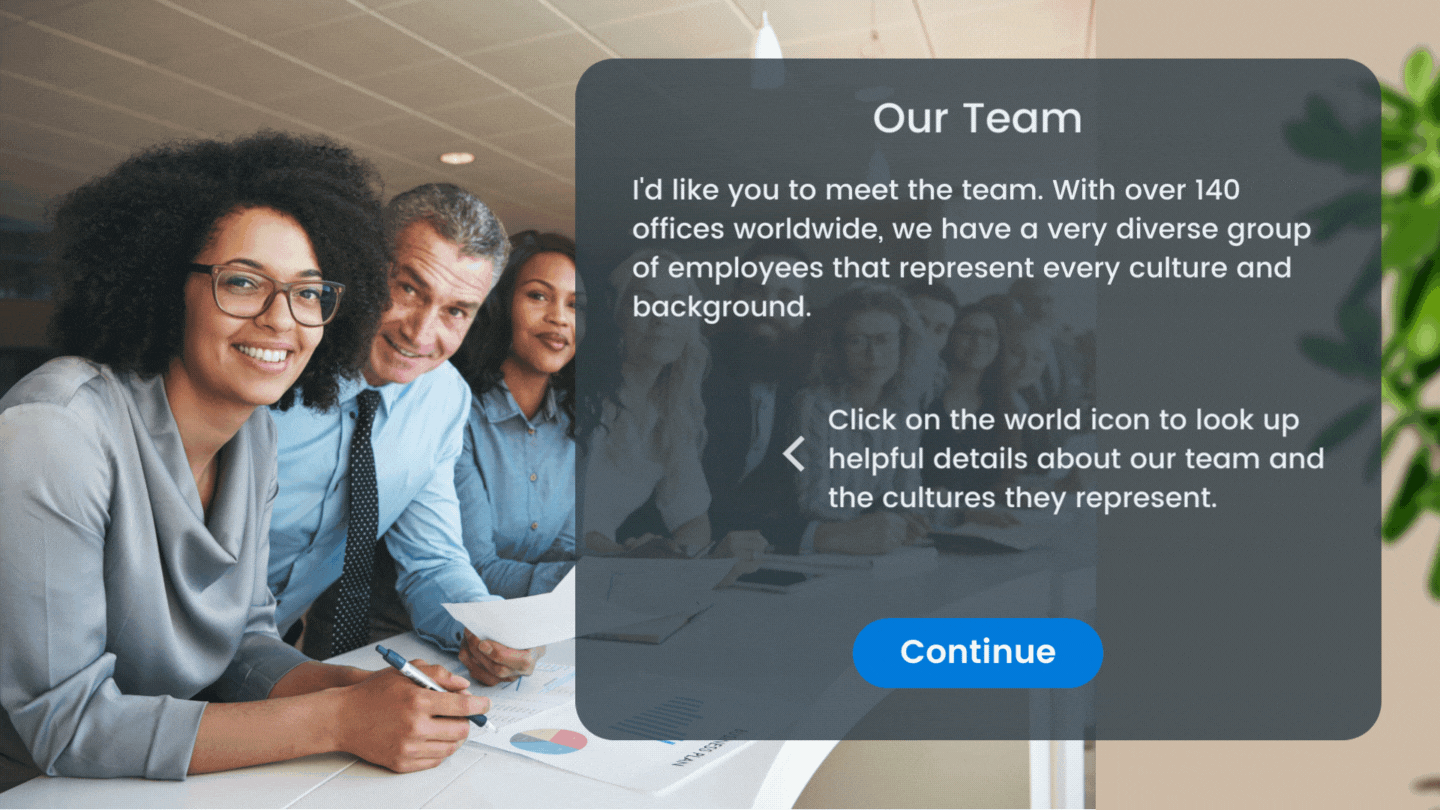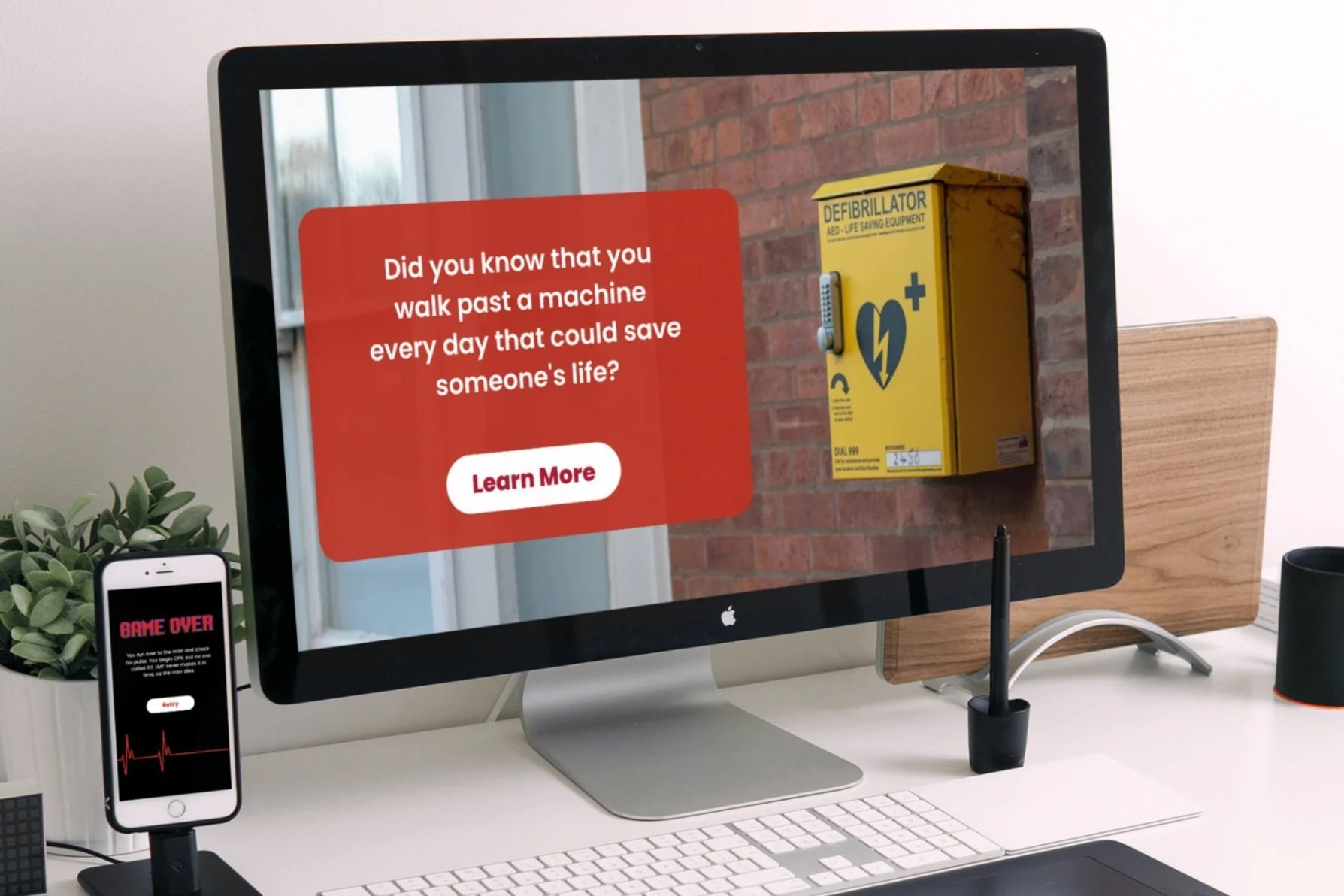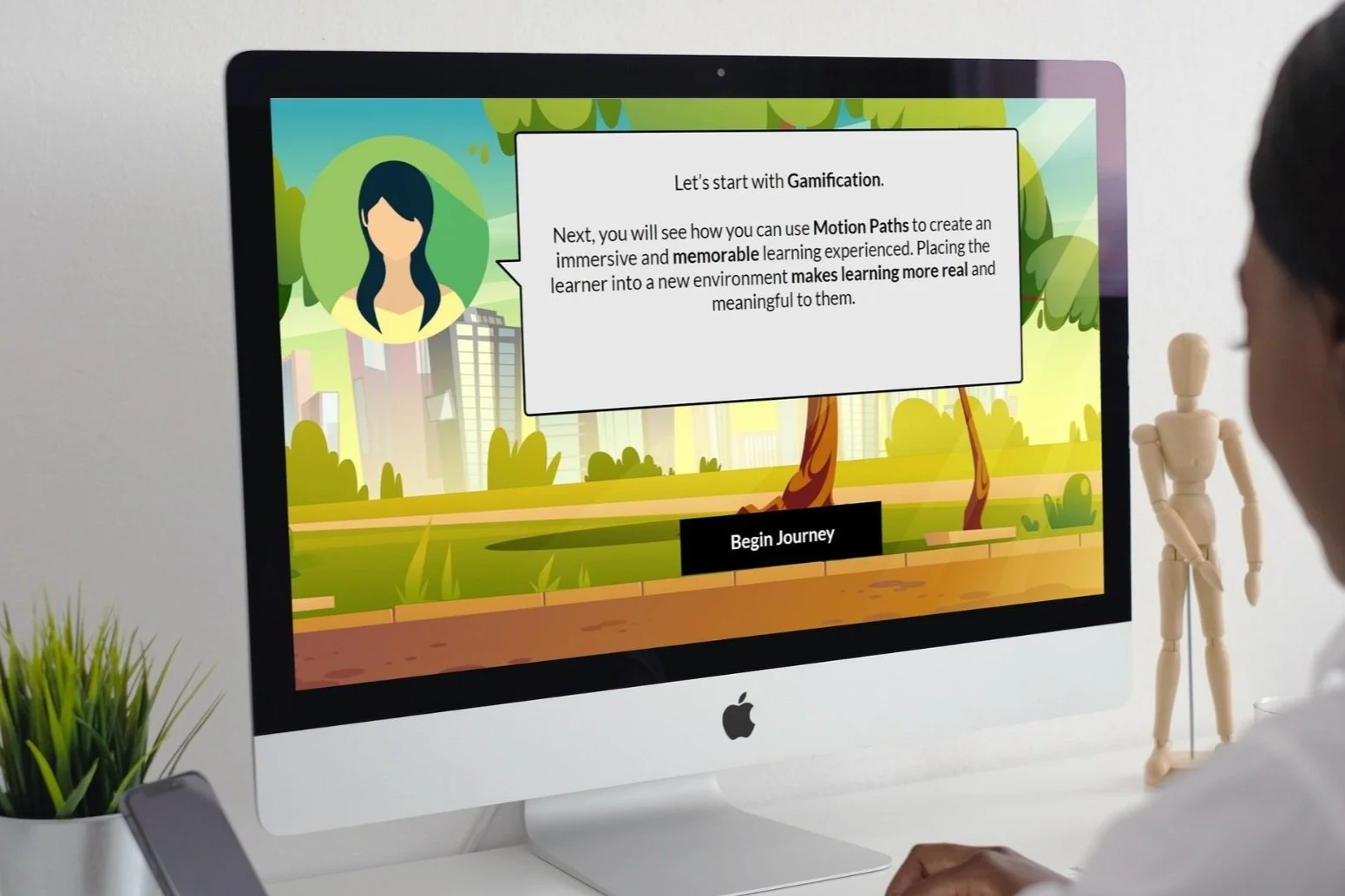

OVERVIEW
This scenario-based eLearning was designed to help employees build cultural awareness and communicate more effectively in everyday workplace situations.
Diversity and Cultural Sensitivity Training
This training was developed for an international organization with a diverse workforce. The goal was to provide an accessible, practical experience that helps employees communicate more effectively across cultures.
✧ Note: This concept was designed to demonstrate how scenario-based eLearning can be used for cultural sensitivity training in a corporate setting.
Audience: Corporate employees in a multicultural workplace
Responsibility: Sole developer (design, development, and asset creation)
Tools Used: Articulate Storyline 360, Adobe XD, Adobe Illustrator, Canva, ElevenLabs
Problem and Solution
The company needed an engaging way to train employees on cultural awareness—something more realistic than just reading policies or sitting through a presentation.
I created a scenario-based learning experience that placed learners in workplace situations where cultural misunderstandings might occur. Each scenario required the learner to make decisions, reflect on their choices, and learn more effective ways to communicate.
Process
Using an action-first approach, I started by identifying what behaviors the company wanted to encourage—like showing empathy, listening actively, and avoiding assumptions. I then designed each scenario to challenge learners to apply those behaviors in real time.
From there, I layered in relatable dialogue, photo-based characters, voiceovers, and feedback to create a realistic, engaging environment that mirrored the workplace.
Following Cathy Moore’s Action Mapping method, I focused on what learners needed to do—not just what they needed to know.
Key actions included:
Identifying cultural misunderstandings
Responding respectfully in conversations
Asking questions to build understanding
Recognizing bias in the workplace
Adjusting communication style for diverse audiences
This helped keep the content focused and relevant, with no filler.
Text-Based Storyboard
Visual Mock-ups
I created mock-ups using branded elements, realistic office settings, and inclusive visuals that reflected the company’s global workforce. This made the training more authentic and helped learners connect with the content.
Prototype
Once the visuals and interactions were ready, I built a working prototype for review. Feedback was used to fine-tune pacing, visuals, and voiceover tone. After making adjustments, I finalized the course in Storyline for delivery.
Final Product
The completed course placed learners into real-world scenarios and asked them to make thoughtful choices in difficult situations. Interactive branching and feedback made the learning active, not passive—giving users a chance to reflect, adjust, and try again.
Takeaways
Action Map
Once the action map was finalized, I created a text-based storyboard to map out each scenario, dialogue path, and feedback response. This helped streamline development and gave stakeholders a chance to review flow and tone early in the process.
This was one of the most meaningful projects I’ve worked on. It required combining empathy, storytelling, and instructional design to deliver training that could truly change how people communicate.
Some of the most important takeaways:
Cultural sensitivity is best taught through realistic scenarios, not just definitions and facts
Giving learners a safe space to make mistakes can lead to real insight
Inclusive visuals and dialogue matter—they shape how people relate to the training
You may also like…
Workplace Safety and CPR Trianing
This scenario-based course uses gamification to teach employees how to identify and use an AED to respond effectively in cardiac emergencies.
Gamified Instructional Designer eLearning Experience
This interactive course introduces new instructional designers to tools like motion paths, branching, and avatar-based learning through hands-on, gamified practice.
Diversity and Cultural Sensitivity Training
This scenario-based eLearning was designed to help employees build cultural awareness and communicate more effectively in everyday workplace situations.
✧ Note: This concept was designed to demonstrate how scenario-based eLearning can be used for cultural sensitivity training in a corporate setting.
Audience: Corporate employees in a multicultural workplace
Responsibility: Sole developer (design, development, and asset creation)
Tools Used: Articulate Storyline 360, Adobe XD, Adobe Illustrator, Canva, ElevenLabs
Problem and Solution
The company needed an engaging way to train employees on cultural awareness—something more realistic than just reading policies or sitting through a presentation.
I created a scenario-based learning experience that placed learners in workplace situations where cultural misunderstandings might occur. Each scenario required the learner to make decisions, reflect on their choices, and learn more effective ways to communicate.
Process
Using an action-first approach, I started by identifying what behaviors the company wanted to encourage—like showing empathy, listening actively, and avoiding assumptions. I then designed each scenario to challenge learners to apply those behaviors in real time.
From there, I layered in relatable dialogue, photo-based characters, voiceovers, and feedback to create a realistic, engaging environment that mirrored the workplace.
Action Map
Following Cathy Moore’s Action Mapping method, I focused on what learners needed to do—not just what they needed to know.
Key actions included:
Identifying cultural misunderstandings
Responding respectfully in conversations
Asking questions to build understanding
Recognizing bias in the workplace
Adjusting communication style for diverse audiences
This helped keep the content focused and relevant, with no filler.
Once the action map was finalized, I created a text-based storyboard to map out each scenario, dialogue path, and feedback response. This helped streamline development and gave stakeholders a chance to review flow and tone early in the process.
Text-Based Storyboard
Visual Mock-ups
I created mock-ups using branded elements, realistic office settings, and inclusive visuals that reflected the company’s global workforce. This made the training more authentic and helped learners connect with the content.
Prototype
Once the visuals and interactions were ready, I built a working prototype for review. Feedback was used to fine-tune pacing, visuals, and voiceover tone. After making adjustments, I finalized the course in Storyline for delivery.
Final Product
The completed course placed learners into real-world scenarios and asked them to make thoughtful choices in difficult situations. Interactive branching and feedback made the learning active, not passive—giving users a chance to reflect, adjust, and try again.
Takeaways
This was one of the most meaningful projects I’ve worked on. It required combining empathy, storytelling, and instructional design to deliver training that could truly change how people communicate.
Some of the most important takeaways:
Cultural sensitivity is best taught through realistic scenarios, not just definitions and facts
Giving learners a safe space to make mistakes can lead to real insight
Inclusive visuals and dialogue matter—they shape how people relate to the training
You may also like…
Workplace Safety and CPR Trianing
This scenario-based course uses gamification to teach employees how to identify and use an AED to respond effectively in cardiac emergencies.
Gamified Instructional Designer eLearning Experience
This interactive course introduces new instructional designers to tools like motion paths, branching, and avatar-based learning through hands-on, gamified practice.

